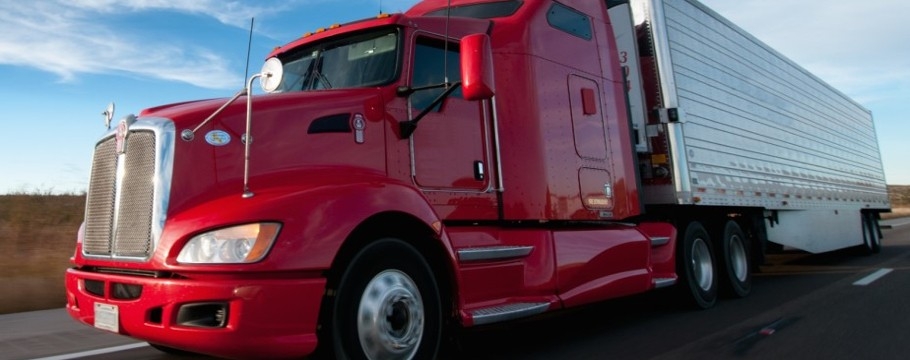Eaton’s Viscosity Grade Change

Over the years, performance demands of heavy-duty truck transmissions diverged from diesel engines and created the need for specializing the fluids. In response to this, Eaton Corporation, original equipment manufacturer (OEM) of transmissions, created the PS-164 specification. Then in 2017, they demanded more robustness from transmission fluids and replaced PS-164, revision 7, to PS-386 for increased fuel economy, extended drain intervals up to 500,000 miles and enhanced durability for gear and bearing protection in extreme temperatures. This new specification also required backwards compatibility for ease of transition. Additionally, Eaton wanted customers to adopt the gear fluid naming convention i.e., SAE 75W-90, to distinguish transmission fluids from engine fluids.
Before the 1980’s, it was commonplace to use monograde fluids such as SAE 40 and 50 in diesel engines and manual transmissions. Then, engine fluids began requiring multi-viscosity grades such as SAE 15W-40. Viscosity modifier additives made this possible and allowed better cold starting protection and reduced fluid consumption in engines. Viscosity modifiers are composed of long chain polymers that could potentially shear too much in transmissions which would lower the viscosity too much, so monogrades in transmissions were still favored. Engines and transmissions now contend with demands of lower emissions and better fuel economy and this has further separated the lubricant technology in these applications.
Modern heavy-duty, manual transmission fluids require advanced anti-wear and extreme pressure (EP) additives for gear protection, longer drain intervals (fill-for-life), decreased friction losses and minimized deposits to meet OEM demands. In some designs that integrate synchronizers, specific frictional qualities are required for smooth operation and synchronizer protection. Table I goes over some of the key formulation comparisons of modern diesel engine fluids and manual transmission fluids.

As mentioned earlier, Eaton also began promoting the use of gear fluid viscosity grades. The new specification moved from the engine oil viscosity grade standard, SAE J300, i.e., SAE 50, SAE 15W-40, to the SAE J306 automotive gear oil viscosity grade standard, SAE 75W-90, SAE 85W-140. Additionally, both SAE J300 and 306 have evolved over the years to add lower viscosity grades catered to fuel economy. All this has made the viscosity changes more complex and confusing than a simple change in numbers.
When the viscosity requirements drawn from SAE J300 and J306 are charted (see Figure I), we can make some sense of how the grades relate. If we look at transmission fluid Delo® Syn-Trans HD, the SAE grade is 75W-90 and the typical viscosity at 100°C is 18.3 cSt. If we follow 18.3 cSt across, it intersects 90 on the gear scale and 50 on the engine scale. The 75W is determined by running a low temperature test, so according to that result and the chart, this fluid can be designated as either SAE 75W-90 or SAE 50. While the numbers are different, it does not necessarily mean that the viscosity is different.
Furthermore, there is a question of transmission versus gear/axle fluids. While both products use the SAE J306 gear viscosity grade standard, transmission and axle performance requirements are considerably different leading to very different products. Mechanically speaking, the rear axle gears endure more abrupt gear changes than manual transmission gears, thus requiring the lubricant to have a higher dosage of EP additive to protect the gear teeth. Conversely, the high dose of EP additives in gear fluids would be corrosive to the yellow metals in transmissions; therefore, we always recommend using the correct fluid type for the intended application.
Eaton’s change from engine grade SAE 50 to gear grade SAE 75W-90 doesn’t necessarily reflect a viscosity change, rather, it indicates a movement of transmission fluid changes and improvements. In fact, SAE 75W-90 transmission fluids can often be used where an SAE 50 grade is called for in older transmissions. Check with your OEM or Chevron representative for your specific transmission.

Note: This chart only includes viscosity at 100°C for the summer grade. It excludes winter grades designated by SAE ##W, it must meet additional low temperature testing listed on the corresponding SAE J300 or J306 viscosity classification table (not shown here).
+Gear oil summer grades also have a shear requirement in addition to viscosity at 100 °C (not required for engine oils)
*Numbers represent typical values for corresponding products. Actual values may vary due to manufacturing differences.
©2019 Chevron U.S.A. Inc. All rights reserved. All trademarks are property of Chevron Intellectual Property LLC or their respective owners.




